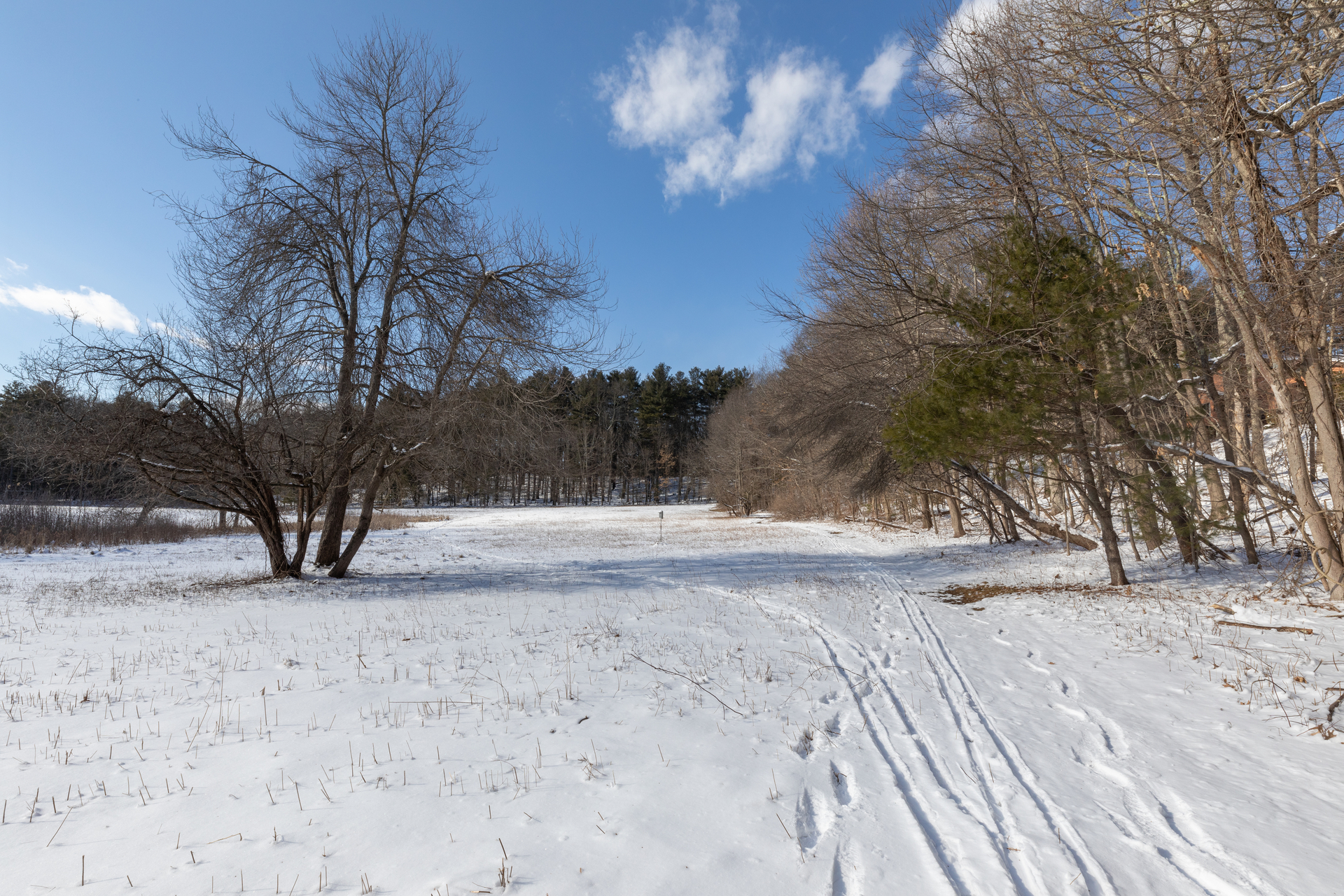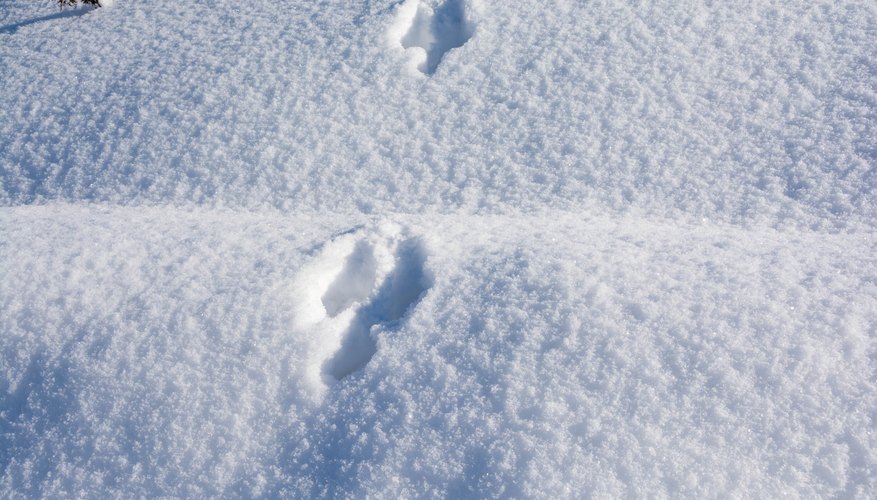Moose prints in the snow indicate recent moose activity. Tracking moose in winter can be challenging but rewarding.
Observing moose prints offers insight into their behavior and habitat preferences. By studying these tracks, wildlife enthusiasts and researchers can gain valuable information about moose movements and population trends. The size and depth of the prints can also reveal the weight and age of the moose.
Tracking moose prints in the snow is an ancient practice that continues to be useful in understanding these majestic creatures. Whether for scientific research or recreational purposes, following moose tracks in the winter landscape provides a unique opportunity to connect with nature and appreciate the beauty of these large mammals in their natural habitat.

Credit: www.massaudubon.org
Introducing Moose Prints
Introducing Moose Prints:Moose prints in the snow are a fascinating glimpse into the world of these magnificent creatures. Let’s delve deeper into the Moose Behavior in Winter and the Unique Characteristics of Moose Prints.
Moose Behavior In Winter:
Moose rely heavily on their keen sense of smell to navigate their surroundings in the winter. They often travel in search of food, leaving behind distinctive prints in the snow.
Unique Characteristics Of Moose Prints:
Moose prints are easily identifiable due to their large size and distinct shape. Their two-toed hooves leave a deep impression in the snow, showcasing their sheer power and size.
Deciphering Moose Prints
Deciphering Moose Prints in the snow can be a fascinating and educational activity. By learning to identify Moose Prints and understanding track patterns, you can gain valuable insights into these magnificent creatures.
Identifying Moose Prints
Moose Prints are typically large, with distinctive characteristics that set them apart from other animal tracks. Look for large, rounded hooves with a deep cleft between the toes.
- Presence of dewclaws
- Size of the prints
- Shape of the hooves
Understanding Track Patterns
Track patterns can reveal valuable information about a Moose’s movement and behavior. By studying the spacing and alignment of the prints, you can decipher whether the Moose was walking, trotting, or running.
- Distance between prints
- Direction of travel
- Pace of the Moose
Interpreting Wildlife Behavior
Wildlife behavior can be deciphered through their tracks in the snow. Interpreting wildlife behavior is a fascinating pursuit that provides an in-depth understanding of animals’ movements and habits. One such compelling activity is tracking moose movements, which can reveal insights into their daily routines and behaviors. Additionally, observing other wildlife tracks can provide valuable clues about the interactions and dynamics of different animal species within their ecosystems.
Tracking Moose Movements
When tracking moose movements in the snow, the size and depth of their prints can indicate the speed and direction of their travel. Moose prints are distinct due to their large, rounded shape with splayed toes. By examining the spacing between the prints, it is possible to discern whether the moose was walking, trotting, or running. Moreover, analyzing the orientation of the prints can reveal the moose’s path as well as its feeding and resting areas.
Insights From Other Wildlife Tracks
Studying other wildlife tracks alongside moose prints provides a comprehensive understanding of the interactions and behaviors of various animal species in the wild. For instance, deer tracks may indicate areas where moose and deer cross paths, while predator tracks can offer insights into potential threats that influence the moose’s movements. Small mammal tracks near water sources can further indicate the presence of moose, shedding light on their preferred habitat and foraging areas.

Credit: sciencing.com
Conservation And Research
In order to ensure the long-term survival of moose populations, conservation and research efforts play a crucial role. Understanding the population dynamics and habitat requirements of moose is essential for developing effective conservation strategies.
Moose Population Monitoring
Moose population monitoring involves tracking and assessing the number of moose within a specific area over time. This data provides valuable insights into population trends, distribution patterns, and habitat suitability. By regularly monitoring moose populations, researchers can identify potential threats and implement appropriate conservation measures.
Implications For Wildlife Conservation
The findings from moose population monitoring have significant implications for wildlife conservation. By understanding the factors that influence moose population dynamics, conservationists can develop strategies to protect and sustain their populations.
One of the key aspects of moose conservation is maintaining the quality and availability of their preferred habitats. This includes preserving and restoring suitable forests and wetlands, which are vital for their survival.
Additionally, research on moose population dynamics can help identify potential threats such as habitat loss, climate change, predation, and diseases. This information enables conservationists to prioritize conservation efforts and implement targeted interventions to mitigate these threats.
The data collected through moose population monitoring also contributes to a broader understanding of ecosystem health. Moose are considered an important indicator species, reflecting the overall health and integrity of their habitats. By monitoring moose populations, conservationists can assess the impacts of environmental changes and identify potential cascading effects on other wildlife species.
Overall, the conservation and research efforts focused on moose populations not only benefit these majestic creatures but also contribute to the preservation of biodiversity and the health of ecosystems.
Educational Opportunities
When it comes to teaching about the wonders of nature, wildlife tracks are an excellent educational tool. Moose prints in the snow, in particular, provide a unique opportunity for children and adults alike to learn about wildlife behavior and engage with nature. By observing and analyzing these tracks, we can gain valuable insights into the movements and habits of moose, contributing to a deeper understanding of the ecosystem they inhabit.
Teaching About Wildlife Tracks
Introducing students to the world of wildlife tracks is a captivating way to connect them with the natural world. By teaching them how to recognize different animal footprints, including those of moose, we foster curiosity and develop their observational skills. Exploring moose tracks in the snow can teach children about the size, shape, and patterns associated with these magnificent creatures’ footprints. Encourage students to compare and contrast moose tracks with those of other animals, facilitating a deeper understanding of animal behavior and the different species that share our environment.
Engaging With Nature Through Tracking
Studying moose prints in the snow offers a unique opportunity to engage with nature firsthand. Encourage students to venture outdoors to look for moose tracks and challenge them to decipher the story these footprints tell. Discussing questions such as, “Where was the moose going?” and “What was it doing?” nurtures critical thinking skills and encourages children to explore their surroundings with a keen eye. By actively engaging with nature through tracking, students not only deepen their knowledge of moose but also foster a sense of appreciation and respect for the wildlife that coexists alongside us.
In conclusion, moose prints in the snow hold immense educational value, providing opportunities to teach about wildlife tracks and engage with nature in a meaningful way. By incorporating lessons on moose tracks into educational programs, we can inspire a love for nature, encourage ecological awareness, and spark curiosity in both children and adults. So let’s grab our snow boots, head outdoors, and discover the fascinating world of moose through their prints in the snow.

Credit: sciencing.com
Frequently Asked Questions On Moose Prints In The Snow
Can Moose Be Found In Snowy Regions?
Yes, moose are well-adapted to cold climates and can be found thriving in snowy regions. Their long legs help them navigate through deep snow, and their thick fur provides insulation against the cold.
How Do Moose Survive In The Snowy Winter?
Moose have a few strategies to survive the snowy winter months. They feed on woody plants and twigs that are still accessible under the snow, and their large bodies allow them to conserve body heat. Additionally, moose have specially adapted snouts that allow them to dig through the snow to find food.
Do Moose Leave Footprints In The Snow?
Yes, moose leave distinctive footprints, or “moose prints,” in the snow. These prints can be quite large, with a rounded shape and a split hoof. By examining moose prints, researchers can gather information about the size, sex, and direction of travel of the moose.
Is It Common To See Moose In The Snow?
Yes, it is relatively common to see moose in snowy regions. Moose are native to northern regions and are well-suited to the cold weather. During the winter months, they may be seen foraging for food or moving from one area to another in search of better conditions.
Conclusion
In studying Moose prints in the snow, one witnesses nature’s quiet but powerful beauty. Observing these unique tracks serves as a reminder of the enchanting wilderness that surrounds us. Our understanding of these imprints deepens our connection with the natural world, fostering a sense of wonder and reverence.


